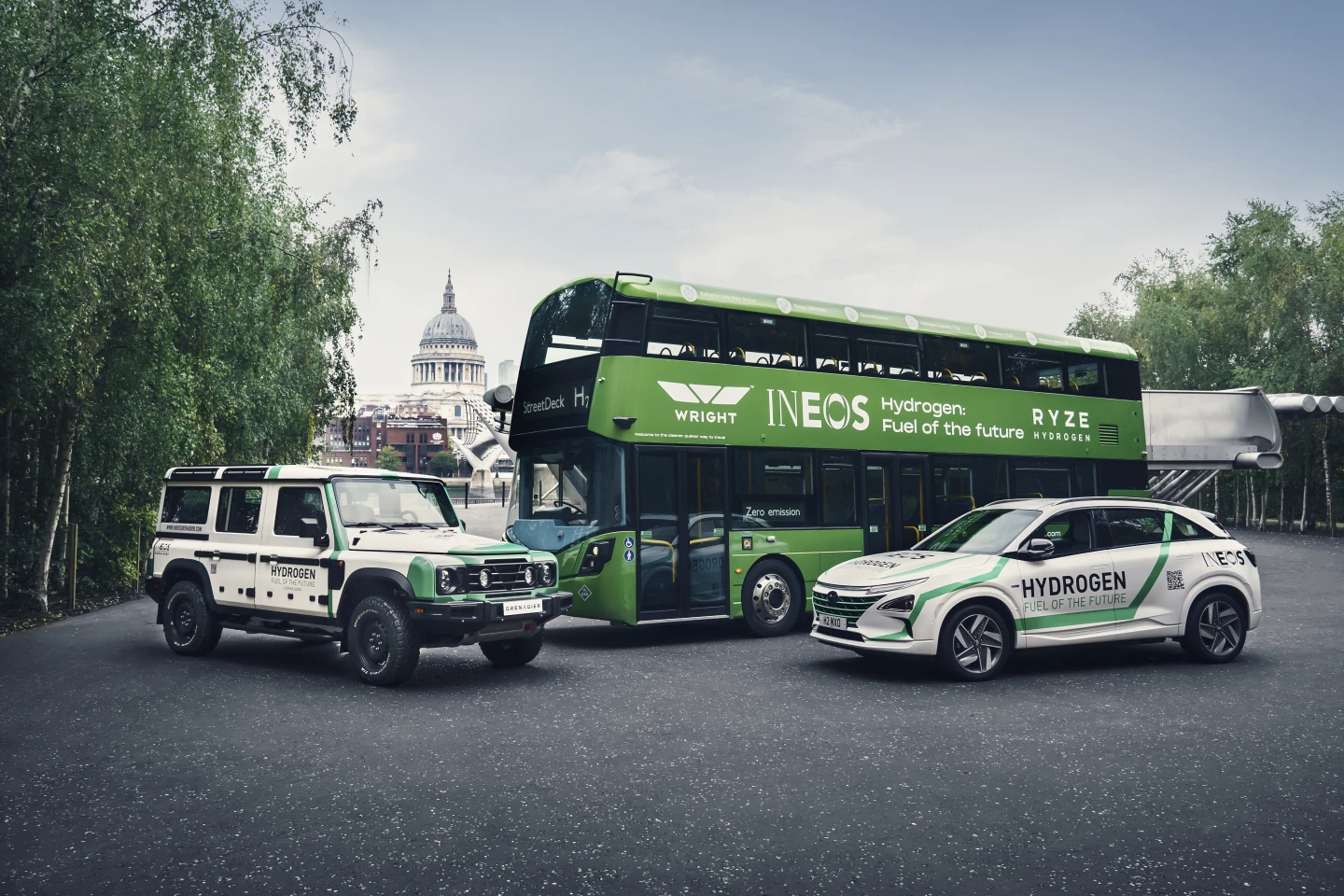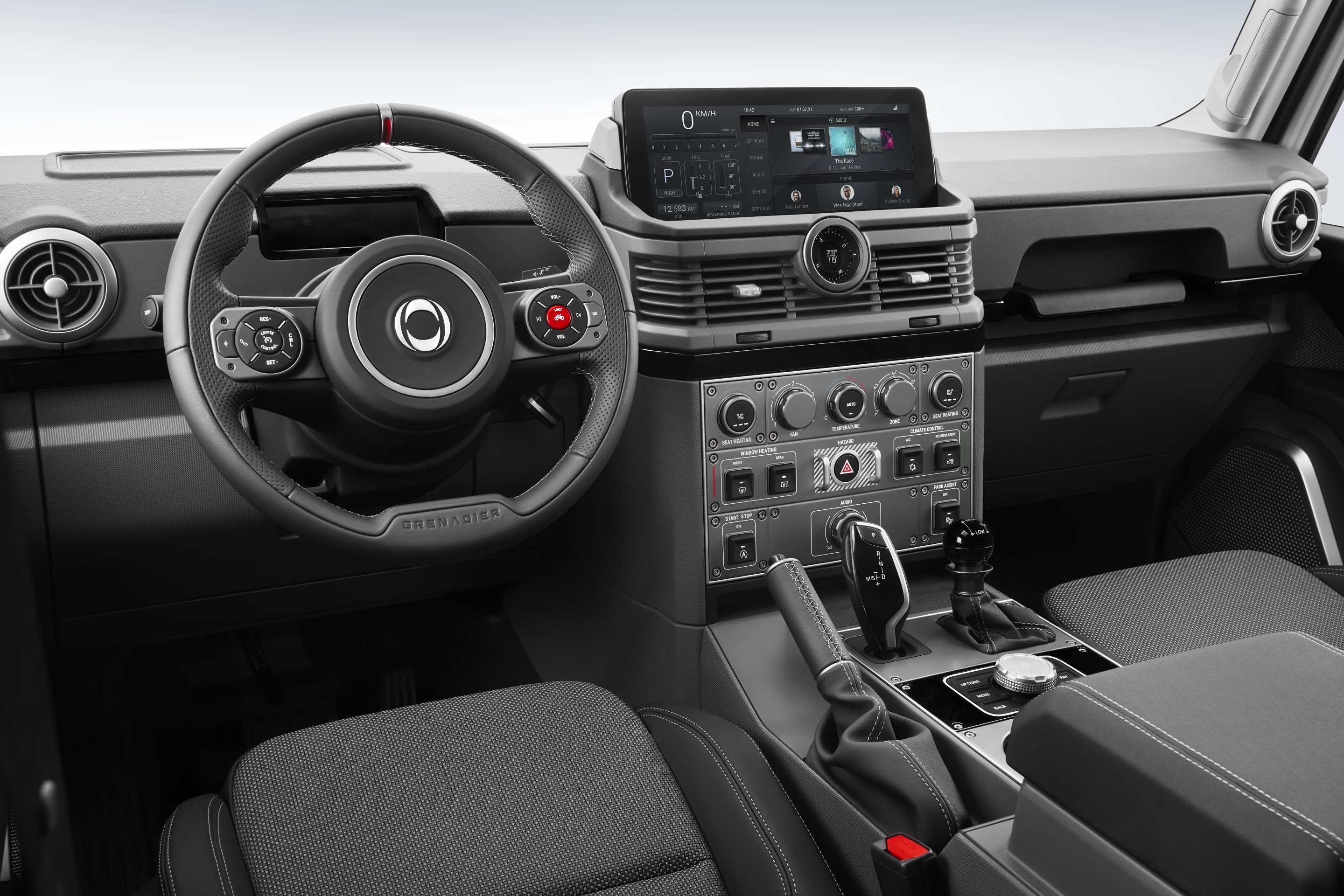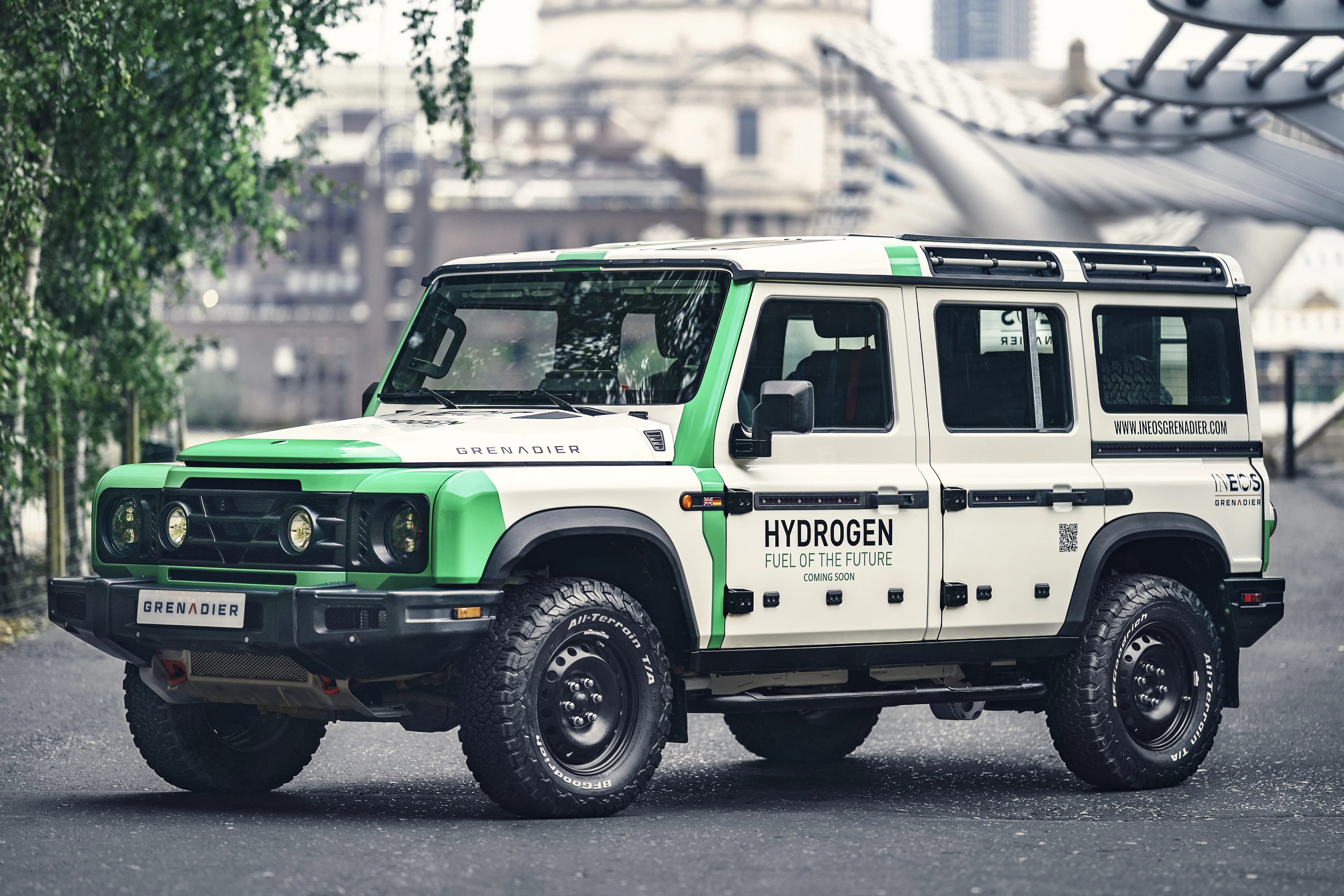British petrochemical giant-cum-4x4 builder Ineos is pushing hydrogen as a leading solution for the UK's green energy revolution. Its work will include experimenting with a Grenadier 4x4 powered by a Hyundai fuel cell system. Ineos will look to offer the driving range necessary to explore the types of distant spaces the old-school Land Rover Defender redux was born to reach, while simultaneously protecting those pristine areas by leaving behind water vapor instead of greenhouse gases.
Ahead of the United Nations' COP26 climate change conference that starts at the end of the month in Glasgow, Ineos launched an advocacy campaign this week to shine light on hydrogen as a critical power source for lowering the UK's greenhouse gas emissions. The campaign is in part aimed at urging the government to invest in hydrogen infrastructure.
Ineos defines itself as Europe's leading operator of electrolysis, a method for cleanly producing low-carbon hydrogen from water. It already produces and uses 400,000 tonnes (440,925 US tons) of green hydrogen annually, and plans to invest a further £2 billion in new hydrogen production across Europe.
The company's campaign focuses on various uses for hydrogen, including power generation, industrial usage and transportation. It intends to put its money where its mouth is for that last use, exploring hydrogen fuel cells as a potential drive source for future variants of its forthcoming Grenadier 4x4, a jeep-like utility vehicle conceived as a rugged, no-nonsense replacement for the original Land Rover Defender.

"Electric cars are ideal for city centers and short journeys," opines Ineos founder and chairman Sir Jim Ratcliffe. "But hydrogen is much better for longer journeys and heavier loads, and that requires immediate investment in hydrogen distribution and hydrogen filling stations."
Heavy loads and long journeys through places without much refuelling or recharging infrastructure are what the Grenadier is all about, and Ineos signed a hydrogen partnership agreement with Hyundai in November 2020. It plans to begin testing a Hyundai hydrogen fuel cell-equipped Grenadier by the end of 2022.
Though Ineos shows a clear bias for hydrogen, it does plan to at least benchmark the fuel-cell Grenadier against an all-electric version. "We will have a hydrogen Ineos Grenadier on test next year (alongside an electric version)," Ratcliffe states in this week's announcement.
If you're thinking a hydrogen fuel cell system might ruin the inexpensive nature of the "stripped-back, utilitarian, hard-working 4x4" Ineos continues to advertise, there's no need to worry. Ineos forfeited any claims of utilitarian affordability three weeks ago when it priced the most basic, two-seat commercial model at £48,000 (about US$66,374) with VAT, somehow making the Grenadier more expensive than the 2023 Land Rover Defender for which it was conceived as a cheaper, simpler, more historically accurate alternative.

The base Grenadier does have two extra doors (though not seats) compared to Land Rover's base commercial 2023 Defender – the £45,675 (with VAT) Hard Top 90 – so you could say Ineos did undercut the £53,745 Defender Hard Top 110, but not by the type of money expected. Perhaps another global corporate spinoff can step in to build the inexpensive, stripped-back, rugged Defender-shaped "working tool" that the Ineos Grenadier was initially supposed to be.
Ineos plans to partner up to create a global network of up to 200 sales and service points, 23 of which are planned to to support the July 22 UK launch. It's also partnered with Germany's Robert Bosch GmbH to provide access to 10,000 Bosch Car Service centers worldwide. Reservations are available now in the UK, with pricing information for other markets yet to be announced.
Source: Ineos










